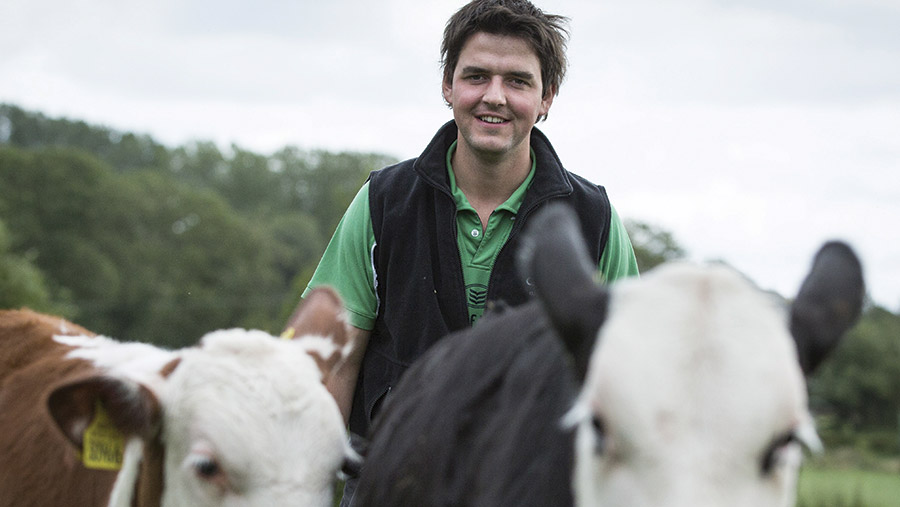Farmer Focus: Calves have come through the weaning period well
 Matthew Brownlee © Steffan Hill
Matthew Brownlee © Steffan Hill Fifty percent of the calves on our farm have now been weaned.
Due to the wet weather, this was slightly earlier than we had hoped for. However, all calves were eating creep feed and have come through the weaning period well.
Our protocol for weaning is to remove cows from the batch and leave all calves in the field. For us, this works very well.
Cows were selected for removal firstly based on anything that needed to be rechecked or wasn’t in-calf when we scanned eight weeks into breeding.
The bulls were removed two months ago and any empty cows can now be fattened and got off farm as early as possible.
The weaned calves have been separated into batches of heifers and bulls, grouped according to weight, and remain outside.
I hope that these will be able to stay on the land to the beginning of November.
See also: Minimal setbacks to bulls at housing essential
The heaviest young bulls from our dairy calf to beef system have been housed.
These were an average weight of 430kg and will now be stepped up onto a fattening diet with February being targeted as a slaughter date.
Performance at grass for these bulls was slightly lower than last year with an average daily weight gain of 0.9kg.
Some periods of wet weather left bulls unsettled during the summer grazing, and this could have been a factor in slightly poorer growth rates when compared with last year.
See also: We can plan for everything but the weather
The mild weather has left cattle sheds warm.
To prevent any problems, these cattle have been clipped and pens not over-stocked.
All our cattle are vaccinated before housing, but pens are still walked twice daily to pick up any early signs of pneumonia.
An improved weather forecast for this incoming week will hopefully allow us to get our wheat harvested.
The wheat and straw will then be used as part of the finishing diets.
With increased meal and straw prices this year, this will hopefully help reduce costs.
Matthew Brownlee farms 121ha alongside his father in County Armagh, Northern Ireland. They run 100 Limousin cross suckler cows and buy in store cattle to finish.
